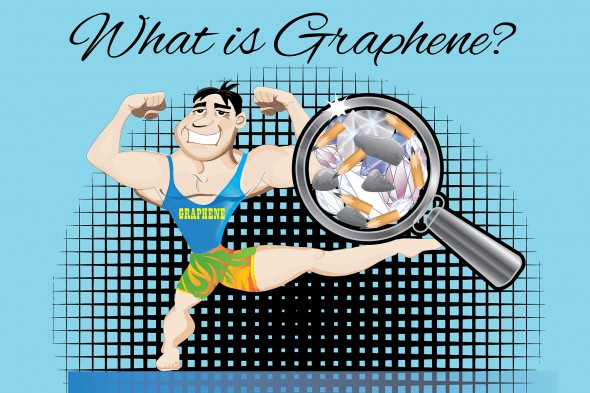Graphene: like diamonds or coal, a carbon with amazing potential
Discovered on the end of a pencil (literally!), graphene is a pure carbon-wonder material like diamond or coal. And, just as structure makes all the difference between a diamond and a lump of coal, the magic of graphene is its amazing structure.
Graphene is as close to two-dimensional as anything in the real world. Graphene’s carbon atoms line up just one atom thick in a hexagonal chicken wire pattern. One atom is THIN — even a human hair is close to 300,000 atoms thick.
Graphene is transparent, light-weight and conducts electricity and heat better than any other known material.
“Graphene is stronger and stiffer than diamond, yet can be stretched by a quarter of its length, like rubber,” said Andre Geim, who shared the 2010 Nobel prize in physics with Kostya Novoselov for their discovery of graphene.
Graphene has potential for an astonishing range of uses — reinforcing and lending electrical properties to plastics, creating denser and faster integrated circuits, building better touch screens. Virtually every nanotech device could benefit from graphene’s extraordinary ability to dissipate heat and optimize electronic function.
So why haven’t you heard of graphene? Because a tiny crystal of graphene is amazing, but we can’t yet make big sheets of graphene to layer on nano-electronics or phone touchscreens.
At UIC, several researchers are working with graphene — finding ways to use this wonder material and figuring out how to get around the roadblocks to its full potential. They include:
Robert Klie, associate professor of physics
When they sandwiched a biological molecule between sheets of graphene, researchers in Klie’s lab got atomic-level images of the molecule in its natural watery environment. “It’s like the difference between looking through Saran Wrap and thick crystal,” Klie says.
Amin Salehi-Khojin, assistant professor of mechanical and industrial engineering
Salehi-Khojin and his lab team discovered a technique for controlling the sensitivity of graphene chemical sensors. The sensors, made of an insulating base coated with a graphene sheet, are already so sensitive that they can detect an individual molecule of gas. But the new technique may enable the senors to detect the most minute concentrations of gas.
Fatemeh Khalili-Araghi, assistant professor of physics
Khalili-Araghi’s team figured out how the boundary between grains of graphene affects heat conductivity in thin films of the substance. This finding brings developers closer to creating graphene film at a scale useful for cooling microelectronic devices and hundreds of other nano-tech applications.
Alexander Yarin, professor of mechanical and industrial engineering
Yarin and a Korea University colleague developed a simple, inexpensive spray method that produces a high-quality graphene layer. “Imagine something like Silly Putty hitting a wall — it stretches out and spreads smoothly,” Yarin says.
Vikas Berry, associate professor of chemical engineering
Berry and his colleagues created an electromechanical device—a humidity sensor—on a bacterial spore by coating the spore with graphene quantum dots and then attaching electrodes to either side of the spore.

